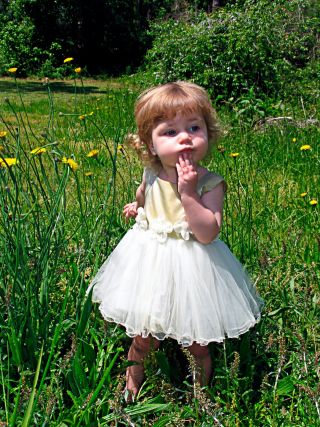Cognition
Can You Be as Creative as a Seven-Year Old?
Tapping the mindset of a child to produce better ideas
Posted August 5, 2014

Thinking Big Thoughts
You are trying to come up with a great idea. Now, what do you need first?
Most everyone will say “information.” You need the facts, the context, the details, the formula. Get that and you can start putting the puzzle together.
But without the right mindset, the only thing you’ll get inside a giant pile of information is lost.
Unless we are open to new ways of seeing things, open to new combinations, open to abandoning the limits we’ve internalized, then we are unlikely to ever find a new way through.
Do you know anyone without fear? Who bristles at boundaries and is poorly suited to self-censorship? Someone who is capable of random associations that put old things in an entirely new light?
If you know a young child, you almost certainly do.
Researchers have long documented that children have more profound powers of creativity when they enter school than when they graduate.
Preschoolers and young elementary school students are capable of more spontaneous and novel perspectives because they are less rule bound.
They haven’t been taught yet what won’t work. They haven’t been taught which thoughts are considered a waste of time. They haven’t been taught all the boundaries – scientific, artistic and otherwise – that mature persons use to remain thoroughly presentable at all times.
The good news is that the power of child-like thinking is still in you.
Darya Zabelina and Michael Robinson found that merely asking their experimental subjects to imagine they were seven years old dramatically increased their creative output. Just put yourself in the mindset of a young person and suddenly you can look at what you already know well and see something you’ve never seen.
The next time you are searching for a great idea, instead of building the mountain of information first, start with eating the snack you devoured when you were seven. Go read Green Eggs and Ham. Download the show you loved to watch after school. Or, find that game you used to play back then and try to win at it.
Now, start listening to this new voice inside you. It’s still very much you – but it’s pure you, unfiltered you – not the you who has spent decades learning the rules, learning what’s not possible, adopting a perspective so that everything is thoroughly acceptable (and nothing is ever revolutionary, extraordinary, or beyond what’s already there).
“Every child is an artist,” Pablo Picasso once said, “The problem is how to remain an artist once he grows up.” Picasso was right. We all begin with unique ways of seeing things. And if we are willing to look back within ourselves, we can once again see more than we thought possible.


